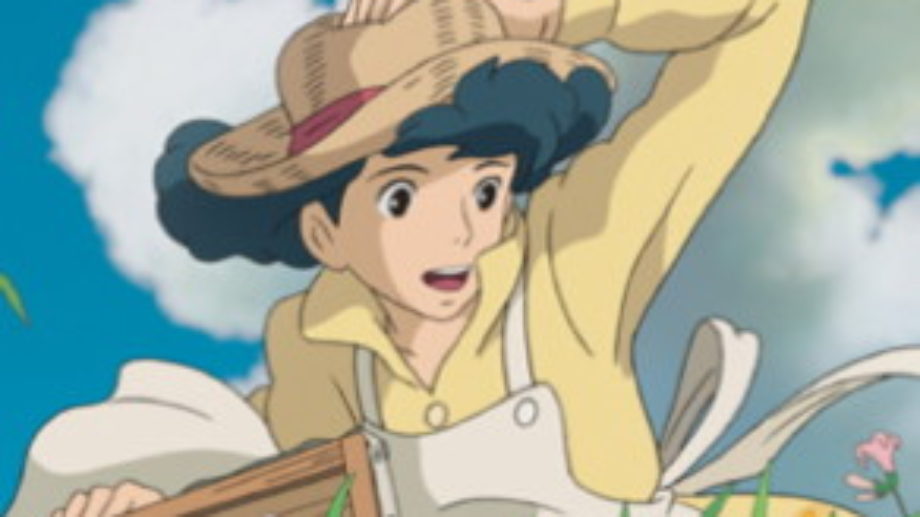
Classical storytelling on a grand scale, Hayao Miyazaki’s latest and purportedly final animated work, The Wind Rises, protects and extends the respected director’s legacy. The story of Jiro, a man with a love and gift for aviation, and the changing times of the world around him, the film is equal part historical drama and historical fiction.
As a little boy, Jiro dreams of freely jetting off into the clouds and taking control of the sky. In the film’s opening sequence, that dream slowly detoriates into an all-too-real nightmare: Jiro’s aircraft is struck down by horrific demons that look to harm him. Jiro then awakens to a similar reality. Soon after, Miyazaki moves the story along to Jiro as a young man—he designs planes for the army—obsessed with Count Caproni, a big shot, distinctly Italian caricature from the pages of an old book on aviation. Jiro fantasizes about Caproni and, in several comedic dream sequences, gets to interact with him and reenergize his passion; Caproni, or at the very least Jiro’s idea of Caproni, serves as positive inspiration.
One afternoon, as Jiro takes a train ride through Tokyo, a deathly horrific earthquake ravages the city and derails his train. This scene is masterfully constructed, the endless smoke and dirt filling up the screen signaling Earth’s ultimate destruction. In the midst of this, Jiro resourcefully provides help to two female passengers, and his display of kindness will eventually allow him to discover love for the first time. Jiro encounters Nahoko, one of the women he saved, later in life, and the two fall head over heels for one another. A scene featuring the passing of a paper airplane back and forth as a display of innocent flirtation provides real warmth.
The Wind Rises possesses layers beyond its narrative. The film touches on war, cultural acceptance and as a result, Japan’s complicated relationship with Germany; the country pays quite a pretty penny for Germany’s advanced industrial technology. But the question still remains for Jiro and his colleagues: why spend so much time designing planes only to have them needlessly destroyed in combat? Miyazaki clearly sees the creativity and craftsmanship involved in aviation while using a true life scenario (a World War) to lament its uses.
A moving love story set to the backdrop of a world in transition, The Wind Rises informs and provokes. As we have come to expect, Miyazaki’s visuals are exquisitely realized, complimenting and often enhancing the environment of characters living in a world with real problems and very real consequences. The effect is thrilling. As the thought of aircrafts consumes Jiro’s senses and heightens them, Miyzaki’s film does very much the same to its viewer.

Reporting for Variety, Scott Foundas wrote, “One man’s dream of flight and an entire nation’s dream of technological and military supremacy give rise to The Wind Rises, Hayao Miyazaki’s elegiac, hauntingly beautiful historical drama inspired by the life of aviation engineer Jiro Horikoshi, who designed Japan’s A6M (or “Zero”) fighter plane. As grown-up as 2008’s Ponyo was tot-friendly, Miyazaki’s 11th feature draws a sober, socially astute portrait of Japan between the two World Wars, marked by flights of incredible visual fancy, harrowing images of poverty and destruction, and touches of swooning romance. Already a major hit at home (where it has grossed more than $80 million after six weeks in release), Wind will prove a trickier sell offshore than the helmer’s more familiar fantasy adventure pics, but should soar with animation and aviation buffs, and discerning arthouse goers of all stripes.”
“I think this is one of [Miyazaki's] greatest films, if not his greatest film,” added NYFF Director of Programming Kent Jones. “This is maybe not a film for children… because it's pretty harrowing—the scenes of the Tokyo earthquake, the destruction, and devastation—but it’s a powerful experience and a film that's at the center of controversy in Japan, which makes for interesting reading.”
The Wind Rises
Director: Hayao Miyazaki
Section: Main Slate
Screens: September 28 at 11:30am + October 4 at 5:00pm
NYFF Official Description:
The great Japanese animator Hayao Miyazaki’s new film, which moves elliptically from early 20th century Japan through the earthquake of 1923 to the aftermath of World War II, was inspired by the life of Jiro Horikoshi, the man who designed the Zero fighter plane. Miyazaki’s father worked in the aviation industry, and he shares his principled, contemplative hero’s passionate love of engineering and longing for flight—it’s at the heart of the film’s story, its visionary imagery, and its poetic refrains and touchstones (the title is from a poem by Valéry—”The wind is rising! We must try to live”). The Wind Rises is something wondrous—a pacifist film with a protagonist who understands that his country is headed for disaster but pursues his dream. It’s also a great and astonishingly beautiful work—and quite a controversial one in Japan—about the fragility of humanity and the pursuit of love.



